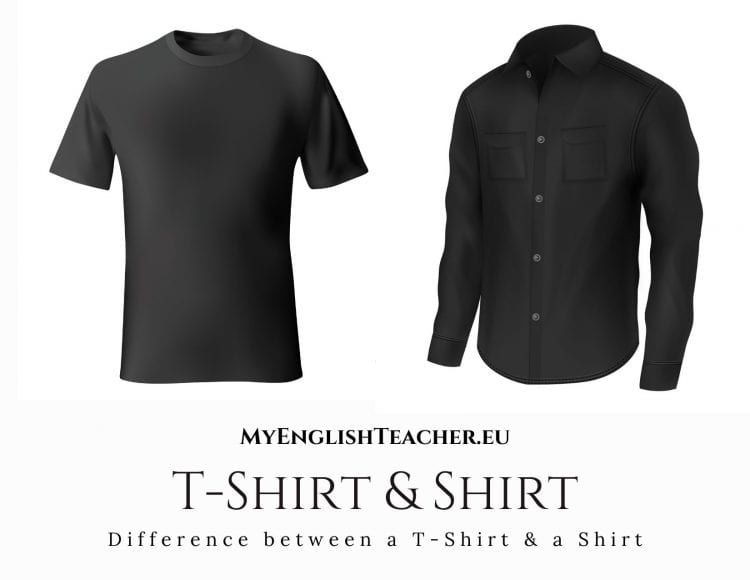
The Distinctive Divide: Unveiling the Subtle Nuances between Shirts and T-Shirts
In the realm of clothing, two ubiquitous garments often grace our wardrobes: shirts and T-shirts. While these terms may seem interchangeable at first glance, a closer examination reveals a world of subtle distinctions that set these garments apart from one another. Embark on an enlightening journey as we delve into the intricate differences between shirts and T-shirts, exploring their historical origins, construction techniques, and the nuances of style and occasion that define each.
Tracing the Threads of History: The Genesis of Shirts and T-Shirts
The genesis of shirts can be traced back to the ancient Egyptians, who adorned themselves with linen garments resembling tunics. Over the centuries, shirts evolved through various iterations, influenced by diverse cultures and changing societal norms. In the 19th century, the modern dress shirt emerged as a staple of formal attire, characterized by its crisp collar and button-down front.
T-shirts, on the other hand, have a more recent lineage. Their origins can be traced back to the early 20th century, when they were primarily worn as undergarments by American soldiers and laborers. The T-shirt gained popularity as a casual top in the 1950s, thanks in part to its association with iconic figures like Marlon Brando and James Dean.
Deconstructing the Fabric: A Comparative Analysis of Construction
Shirts and T-shirts exhibit distinct differences in their construction, reflecting their intended uses and the level of formality they convey.
Shirts are typically crafted from woven fabrics, such as cotton, linen, or silk. Woven fabrics are characterized by their interlocking threads, which create a sturdy and wrinkle-resistant texture. Shirts often feature intricate details, such as collars, cuffs, and buttonholes, which require skilled craftsmanship.
T-shirts, on the other hand, are made from knit fabrics, such as cotton or polyester. Knit fabrics are created by interlocking loops of yarn, resulting in a softer, more flexible texture. T-shirts are generally simpler in construction, with a crew neck, short sleeves, and a lack of embellishments.
The Language of Style: Unraveling the Nuances of Formality and Occasion
The choice between a shirt and a T-shirt depends on the desired level of formality and the occasion.
Shirts are generally considered more formal than T-shirts. They are appropriate for a variety of occasions, including business meetings, job interviews, and special events. The type of shirt chosen can further refine the level of formality, with dress shirts being the most formal, followed by button-down shirts, and finally polo shirts.
T-shirts, on the other hand, are casual garments suitable for everyday wear, running errands, or engaging in recreational activities. They can also be dressed up or down depending on the accessories and other clothing items they are paired with.
Beyond the Basics: Exploring the Wide Spectrum of Styles and Designs
Both shirts and T-shirts come in a vast array of styles and designs, catering to diverse tastes and preferences.
Shirts can range from classic white dress shirts to vibrant patterned button-downs. They can be tailored to fit the wearer’s body, emphasizing a sharp and polished look. Shirts can also feature various collar styles, including spread collars, wing collars, and mandarin collars, adding an element of personal style.
T-shirts offer an even wider range of designs, from plain solids to eye-catching graphics, prints, and logos. They come in a variety of colors, from basic black and white to bold hues and vibrant patterns. T-shirts can be oversized, fitted, or cropped, allowing individuals to express their unique sense of style.
The Art of Layering: Incorporating Shirts and T-Shirts into Multi-Layered Ensembles
Shirts and T-shirts play versatile roles in the art of layering, adding depth and interest to outfits.
Shirts can be layered under sweaters, jackets, and vests to provide warmth and a touch of sophistication. They can also be worn untucked over jeans or chinos for a more casual look.
T-shirts can be layered under shirts to create a relaxed and effortless style. They can also be worn as a standalone top, paired with shorts, skirts, or leggings for a comfortable and casual ensemble.
FAQs: Unraveling Common Queries about Shirts and T-Shirts
- What is the key difference between a shirt and a T-shirt?
The primary difference lies in the fabric and construction. Shirts are typically made from woven fabrics and feature collars and button closures. T-shirts, on the other hand, are made from knit fabrics and have simpler construction with a crew neck and short sleeves.
- Which is more formal, a shirt or a T-shirt?
Shirts are generally considered more formal than T-shirts. Dress shirts are the most formal, followed by button-down shirts and polo shirts. T-shirts are casual garments suitable for everyday wear and recreational activities.
- Can I wear a T-shirt to a job interview?
In most cases, it is not appropriate to wear a T-shirt to a job interview. Shirts, particularly dress shirts or button-down shirts, are the more suitable choice for such formal occasions.
- Can I layer a T-shirt under a shirt?
Yes, layering a T-shirt under a shirt can create a relaxed and stylish look. This combination is particularly effective in cooler weather, providing both warmth and a touch of casualness.
- What is the best way to care for a T-shirt?
To maintain the quality and longevity of a T-shirt, it is recommended to machine wash it in cold water and tumble dry on low heat or hang dry. Avoid using bleach or harsh detergents.






